- Published on
- Authors
You can also listen to the article Narrated by: Lord Avatar II | Music: Craig Armstrong & Thomas Bergersen
Or you can listen on podcast platforms
Contents
1. Introduction
2. The first and greatest civilizations of the history
4. Aryan People
6. The Beginning of the Kingdom of Cyrus the Great: The Achaemenid Empire
8. Achaemenid dynasty after Cyrus the Great
Introduction
History is always repeating and in fact, no one has ever put the history that we had, in front of the history that we have today. But there were also those who had knowledge of this and enough boldness to display it. For example, a Spanish philosopher and poet, George Santayana said: “Those who do not remember history are condemned to repeat it.” His words make us consider – are we really repeating history? Looking for the answer to this question, I have been studying many of the world’s most authoritative sources for years.
Historically, rulers always had a limit on people’s access to the truths of the past, they wrote whatever they wanted in historical books, controlled the publications used in schools, and introduced their own enemies and friends. I am a motive force who has a lot of desire to transfer what he knows, although the history is very deep and long, but a summary of it can be read. Therefore, I will try to write from the beginning of the history of ancient Iran and even before the Achaemenid Empire. Why do people say that Iran is the cradle of civilization in the world? What is civilization? When and how was Iran created? To answer these questions I traveled to Khuzestan and Hamedan to take some photos to publish with these writings. In fact, 5000 years ago, Susa in Khuzestan was the capital of the first Iranian civilization, Elamite. Keep in mind that what I write is the result of my studies of world-renowned sources and none of the resources that have been written in favour of modern and contemporary governments have been involved.
After centuries and passing through the early humans, the history of the world was shaped by the formation of civilizations. Cities were created and human greed for the expansion of the area caused many wars and much bloodshed. But where in the world were the first civilizations were made?
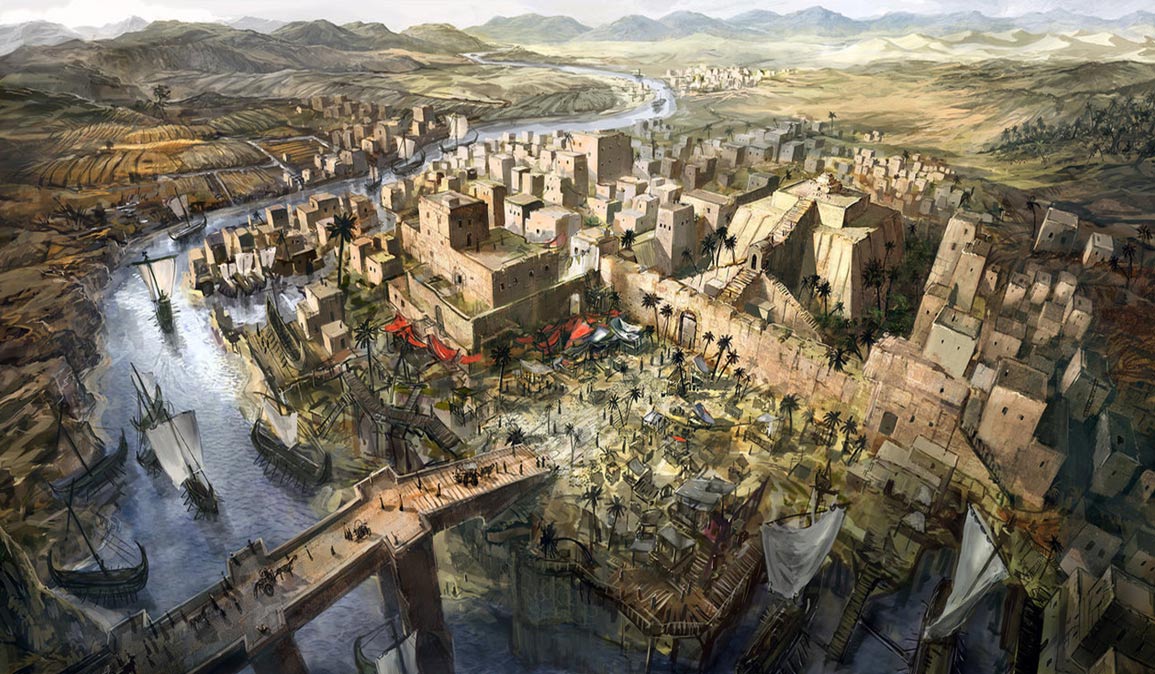
Civilization: A civilization is generally defined as an advanced state of human society containing highly developed forms of government, culture, industry, and common social norms. A civilization is any complex society characterized by urban development, social stratification imposed by a cultural elite, symbolic systems of communication (for example, writing systems), and a perceived separation from and domination over the natural environment. The English word "civilization" comes from the 16th-century French civilisé ("civilized"), from Latin civilis ("civil"), related to civis ("citizen") and civitas ("city").
Cradle of Civilization
1. Mesopotamia Civilizations - 3700 BC (some said 4500 BC) Mesopotamia is a historical region in West Asia situated within the Tigris–Euphrates river system, in modern days roughly corresponding to most of Iraq, Kuwait, parts of Northern Saudi Arabia, the eastern parts of Syria, Southeastern Turkey, and regions along the Turkish–Syrian and Iran–Iraq borders. Includes: Sumer - Akkad - Babylon - Assur
2. Ancient Egypt (Nile River Valley) - 3100 BC
3. Indus River Valley (in a region that is today Pakistan and northern India)
4. Chinese Civilizations (Yellow River Valley)
5. Aegean Civilization (in modern Greece - Aegean sea area)
And smaller civilizations have been created in Elam in the modern world of Iran, and in Crete Island in the Adriatic Sea, such as the Ummak civilization, which was in the modern world of Mexico.
Bear in mind that after the collapse of these civilizations, 530 BC, different tribes of Aryan formed the first great empire in the world in Iran. Which includes: Achaemenid Empire (550-330 BC)
and then:
Sassanid Empire (651 AD) Safavid Dynasty (1736-1501) Afshari dynasty (176-1736 AD) Qajar Dynasty (1925-1785)
In the map below, you will see the places and names of the first and most ancient civilizations of the world, the first was the Mesopotamia civilization.
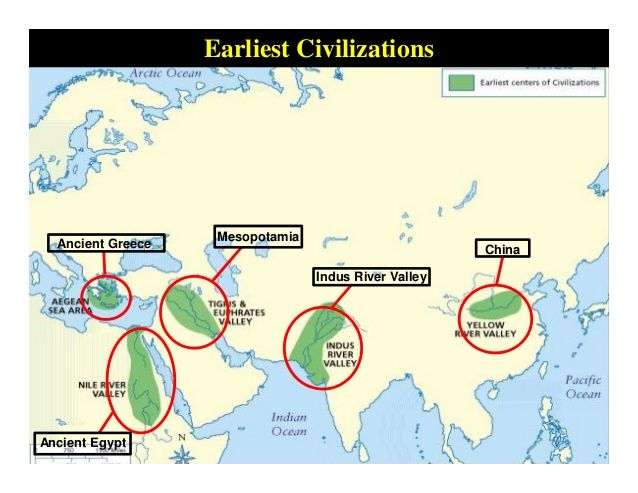
In this study, we will read about the Mesopotamian civilizations, from the beginning to the end, and later, we will read about the Medes and the advent of the Achaemenid Empire.
Iran is the cradle of civilization in the world:
I knew that Iranian history dated back about 7000 years ago. I have read in well-known articles and sources that the ancient Silk hills of Kashan, Marlik in the south of Guilan, Hasanlu in the south of Urmia, Shahr-e Sukhteh in Sistan and Baluchistan are from the earliest. But what happened to Iran afterwards?
Iran, the cradle of civilization that its fertile soil has always led others to fight for and conquer it, and one of its beautiful and glorious regions (Khuzestan) witnessed many ups and downs during the history for more than 5000 years. Khuzestan a land full of mysteries is like an adventurous book. In fact, exploration of Mesopotamia and Elam’s civilization and the Persian Empire was what I was waiting for, although I had seen Khuzestan in my childhood, but the pleasure of traveling is in knowledge.
Mesopotamia
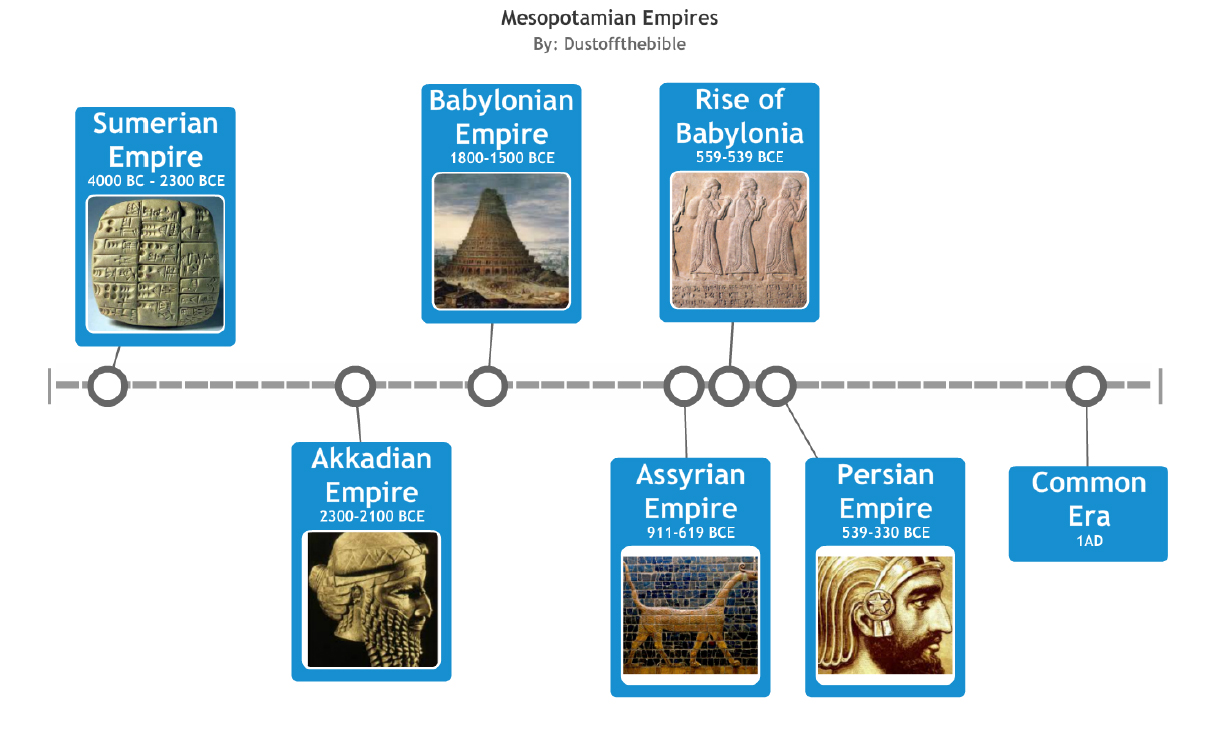
Sumer and Elamite civilization
About 5000 years ago (2700 BC), Sumer was the earliest known civilization in the historical region of southern Mesopotamia, modern-day southern Iraq, during the Chalcolithic and Early Bronze ages, and arguably the first civilization in the world with Ancient Egypt and the Indus Valley. The cuneiform was invented at that time, then at the same time the first Iranian civilization called Elam was formed by ancient Lurs along the Karoun River.

The Elamites called their country as “haltamti” which means “the land of God.” Archaeologists today see Lurs as the survivors of the same civilization with the same culture and behavior. In fact, the true name of this country is haltamti, the name of Elam is given to them by neighbors, just like we say Hungary, but they call their country as “Magyarország“, so the correct name of the countries is the one they use and pronounce, not the name we have chosen for them and pronounce it. And it’s the same about Elamite, name of this land is either Haltamti or Helmathi, not the Hebrew name of Elam, which was chosen solely by their enemies and brought into Jewish books, which is not scientific at all.
Sumer Civilization
Capital: Uruk Founded: about 6500 years ago (4500 BC) Disestablished: 3900 years ago (1900 BC) Duration: about 2600 years
Elam Civilization
Capital: Susa (Shush) Founded: about 4700 years ago (2700 BC) Disestablished: 2557 years ago (539 BC) Duration: about 2140 years
Akkad Civilization
About 3,452 years ago (2334 BC), a person called Sargon of Akkad attacked the Sumerian civilization, seized all Mesopotamia and attacked neighboring countries such as Elam (haltamti) and Assyria and defeated them. Eventually the first empire of history arose. But after Sargon’s death, the Akkadian Empire did not last and the whole country was in chaos. The Elamites who used to retaliate for the attack took advantage of the situation, defeated the Akkad Empire and returned to their country and selected Susa as their capital. (Keep in mind that about 500 BC the biblical Book of Esther is set in the Persian capital of Susa (Shushan/Shush) in the third year of the reign of the Persian king Ahasuerus.)
As I have repeatedly said, history is always repeating, when a kingdom fails or a country is chaotic (like today’s Syria, and yesterday’s Iran), the enemies attack them for revenge and greed for wealth. After the death of Sargon, nomad wild tribes from the Arab desert attacked southern Mesopotamia and over time, they became acquainted with advanced civilizations like Sumer, built the city of Babylon, and the next generations created the Babylonian civilization.
Capital: Akkad Founded: 4352 years ago (2334 BC) Disestablished: 4173 years ago (2155 BC) Duration: 179 years
Babylonian and Assyria Civilizations & The end of Elamites
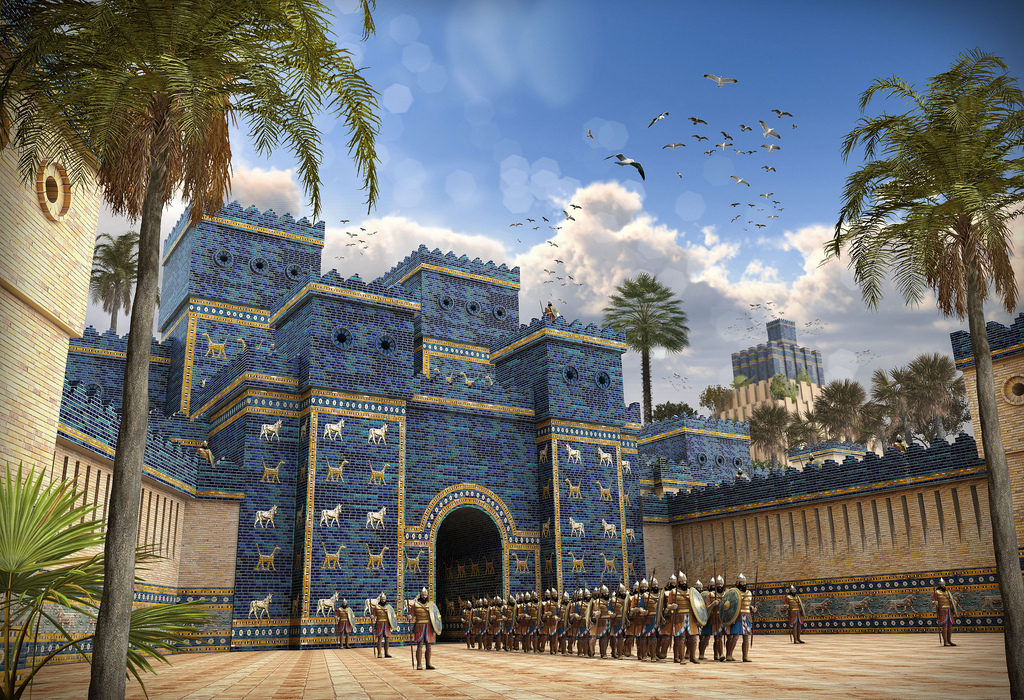
When the Babylon civilization was in the process, the Assyrian wild tribe invaded the north of Mesopotamia and conquered it, The Assyrians built palaces with the plunder of the wealth of their neighbors and forced captives to work. For a long time, the civilizations of Elam, Babylon and Assyria fought together. In one of these wars, the Elamites defeated the two civilizations and, after centuries, the Assyrians and the Babylonians were again able to take back the lands. Until about 1100 to 770 BC, the unification of Elam and Babylon took place against Assyria. As long as 639 BC, Elam was defeated by the Assyrian Empire and disappeared from the world forever. And eventually the king of Assyria plundered the Shush.
In a tablet unearthed in 1854 by Henry Austin Layard, Ashurbanipal (king of Assyria) boasts of the destruction he had wrought:
“Susa, the great holy city, abode of their Gods, seat of their mysteries, I conquered. I entered its palaces, I opened their treasuries where silver and gold, goods and wealth were amassed … I destroyed the ziggurat of Susa. I smashed its shining copper horns. I reduced the temples of Elam to naught; their gods and goddesses I scattered to the winds. The tombs of their ancient and recent kings I devastated, I exposed to the sun, and I carried away their bones toward the land of Ashur. I devastated the provinces of Elam and on their lands I sowed salt.”
Susa Ziggurat is the “Chogha Zanbil Ziggurat”.
Chogha Zanbil Ziggurat:
Religion was very important in the life of the Elamites. They considered all the good happenings to be divine gifts. Elam was a polytheist country, they worshiped different gods in their different states. The hierarchy of the gods was like this: female gods, then male gods, were at the top of the gods. When Susa (Shush) became the capital of the Elamites, “Inshushinak”, the god of Susas, was at the top of the gods. About 1250 BC (about 3200 years ago), Untash-Napirisha (the great king of Elamite) built the city of “Dur-Untash” near the Dez River between Susa and today’s Shushtar and built a Ziggurat in the middle of it. One of the ancient arts left by the Elam civilization is the “Chogha Zanbil” ziggurat near Shoush (Khuzestan province). This huge ziggurat was made of millions of bricks. This place was the first religious site in Iran and also is considered to be the best preserved example of the stepped pyramidal monument by UNESCO. In 1979, Chogha Zanbil became the first Iranian site to be inscribed on the UNESCO World Heritage List.

In a few sentences, the king summarizes the principles of making this ziggurat:
“After I got the building materials, I built here the city of Dur-Untash and the sacred place. I enclosed it with an internal and an outer wall. The temple that I built is not like what the previous kings had built. And I dedicate it to the God, Inshushinak, the protectors of the holy place. I hope that my building and effort will be dedicated to him, may the pleasure of Inshushinak be established here.”
How was Chogha Zanbil Ziggurat found? In 1890, a well-known geologist Jacques de Morgan reported that there are oil mines in the Chugha Zanbil area. It seems that Iran’s oil company was founded following the same report. After fifty years, engineers who were busy with petroleum activities in Chogha Zanbil found a brick on which there were writings. They sent the brick for archaeologists exploring in Susa, and thereafter, a chain of explorations took place in Chogha Zanbil, which led to the discovery of the Chogha Zanbil Ziggurat and some other important antiquities. For many centuries, this place was buried under the soil in the form of an overturned basket until it was excavated by the Frenchman Roman Ghirshman during the second Pahlavi time. The excavation of this symmetrical convex building located in the heart of the plain made the world more knowledgable of the ancient Persian history.
Assyria Civilization
Capital: Assur, ... Founded: 4518 years ago (2500 BC) Dissolved: 2623 years ago (605 BC) Duration: 1895 years
Babylonian Civilization
Capital: Babylon Founded: 3913 years ago (1895 BC) Dissolved: 2557 years ago (539 BC) Duration: 1356 years
Medes Empire
This devastation and cruel killing by Ashurbanipal remained in the minds of the Persians for less than half a century, then later the Medes, led by the Iranian king Cyaxares, were able to take revenge on the Assyrians.
continues…
Aryan People
Iran was one of the most powerful countries of the world until decades ago: but why? Is it only resources that can make a country strong? No, sometimes resources can even create threats in countries. The thing that had strengthened Iran until then was the Alliance of Iranian. Throughout the history of Iran, this alliance was always clear. However since Iranians lost that alliance, the country has been chaotic.
Where did the Iranians come from?
In around 2000 BC, a number of people from the north of the Iranian plateau migrated to the south of the Iranian plateau due to the weather and to protect their livestock. This group of people were called “Aryans” and over time replaced the previous inhabitants, and named their land “Iran” which means “the land of the Aryans”.
The Aryans were three groups: 1. Medes - in the west 2. Persians - in the south (near Elamite) 3. Parthians - in the northeast
The Aryans, in exchange for helping the Kings of Elam in the war with the Assyrians, were allowed to build a city, and eventually, the spread of the influence of the Persians and the Medes made it a permanent homeland for them.
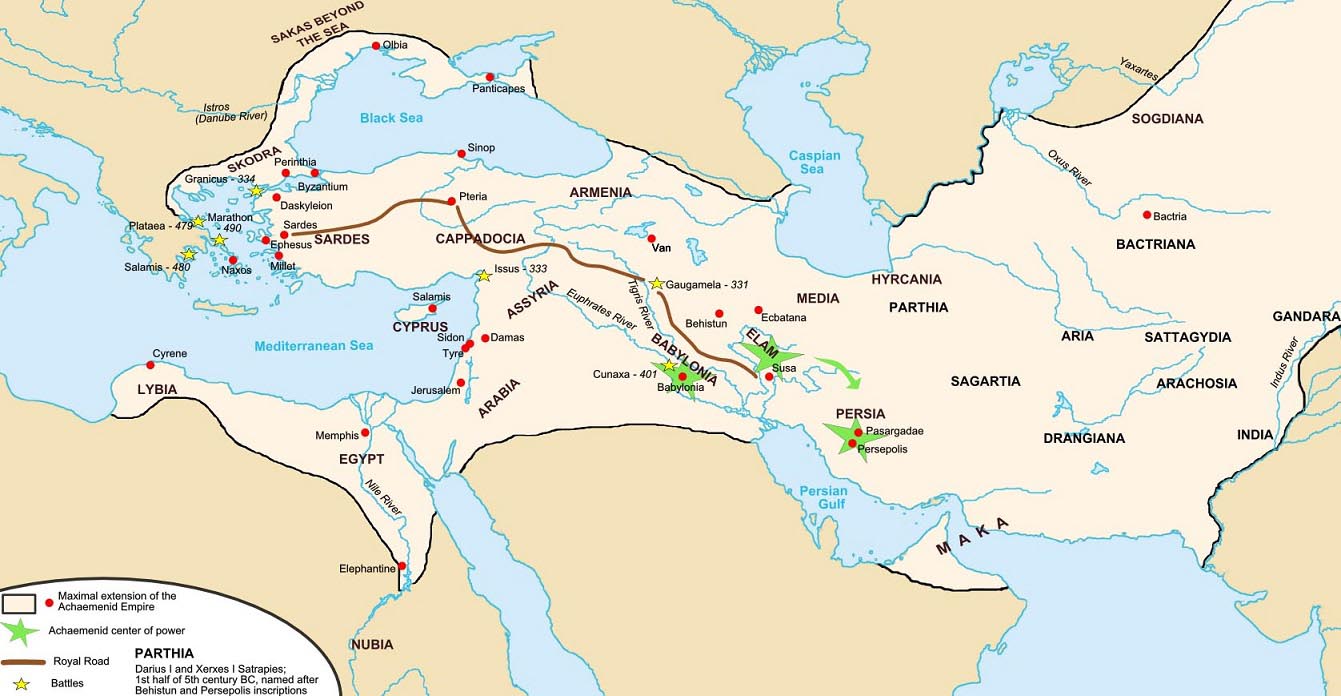
After the destruction of the Elamite civilization due to the devastating and cruel killing of Ashurbanipal (king of Assyria), the Iranians did not forget the bitter memories of this event, until less than half a century later, the Medes led by the Iranian king Cyaxares were able to take revenge on the Assyrian. The Elamite civilization was in fact a backbone for the people of Medes, which, after its destruction, the people of the Medes weakened and the Assyrians repeatedly attacked them. Eventually, the various Medes' tribes set up a meeting in Hegmataneh (today's Hamadan) and selected Deioces from among them as a ruler. This was the first Medes government. Also, with the expansion of this government, the city of Hegmataneh was chosen as the capital of Medes. As I wrote about the union of Iranians, at this time an alliance between the other Iranian (Persians and Parthians) and the Medes was formed, so now the Iranians were united and formed a powerful state. I was wondering how the Median rule defeated the Assyrians, who were the most powerful rulers of that time? In response to this question, I went to Hamadan and the capital of the Medes.
In 612 BC, and after the death of Ashurbanipal (king of Assyria), the grandson of Deioces, Cyaxares, who could get the kingdom of Medes after his grandfather, became united with the king of Babylon (Nabopolassar), they rushed to Assyria and defeated them after many long wars. After the war, in the same wreckage of Assyria, Cyaxares and the king of Babylon, in order to maintain this alliance, decided to give the daughter of Cyaxares, Amitis, to the son of the king of Babylon, Nebuchadnezzar II, to marry. Eventually, the Median and Babylonian armies went to the Nineveh (the capital of Assyria) to make a bloody war, and destroyed it. The Assyrian empire, whose name shook everyone to fear for over 500 years, collapsed forever and their territory was divided between the Babylonians and the Medes. Now, Iranians had the largest kingdom of West Asia.
The Greek historian Herodotus writes about the Medes and the Assyrian defeat:

Five hundred and twenty years the Assyrians ruled Upper Asia. The first to revolt from them were the Medes, they fought for the freedom, they made passions and released from bondage.
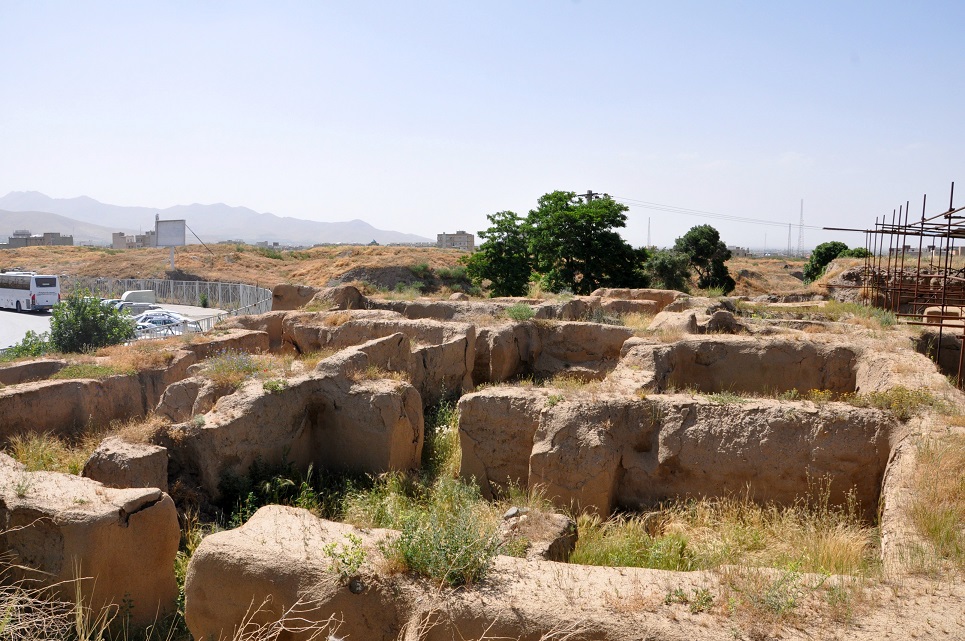
After Nebuchadnezzar II had taken the throne of Babylon after his father, he greedily decided to expand the country, and eventually ordered an attack on Phoenicia (Lebanon and Palestine of today) and drove Jerusalem to blood and soil. He Destroyed the temple of Solomon and brought many Jews to Babylon as slaves.
Nebuchadnezzar II, who was a cruel king, has written in one of his inscriptions:
"I commanded to take a hundred thousand eyes out of the bowl, and break hundreds of thousands of feet. I took the eye of the enemy’s commander with my own hand, I burned thousands of boys and girls alive in the fire. I destroyed the houses so that no live voices would ever come out of them."
Amitis, whose heart missed her hometown gardens, Nebuchadnezzar II ordered to build many beautiful gardens in all the palaces for this Iranian queen. These famous gardens were called Hanging Gardens of Babylon, and they were among the seven wonders of the world, but today there is no trace of them left.
After the death of Nebuchadnezzar II (652 BC), the kingdom of Babylon progressed to destruction, and after the death of the Medes king, Cyaxares, his despicable son, Astyages, came to the kingdom.
Eventually, the Babylonian and Medes empires were overthrown by a Persian noble named Cyrus, who was also Astyages's grandson.
Cyrus the Great
Grandfather of Iran
Herodotus, the Greek historian of the Achaemenid period (484 to 525 BC), is known as the father of history. He left a book that is still an important source for many scholars. Although Herodotus was born in a country that at that time was a part of the kingdom of Iran, he identified himself as a Greek man in his book. His anti-Iranian bias made him exaggerate in some cases, such as defeating Iran from Greece, and erroneous judgments about the Achaemenid kings.
Herodotus writes about Cyrus the Great: Astyages had a dream in which his daughter, Mandane, gave birth to a son who would destroy his empire. Fearful of the dream's prophecy, Astyages married her off to Cambyses I of Anšan (Pars lands), who had a reputation for being a "quiet and thoughtful prince" and whom Astyages believed to be no threat.
In the first year of Mandane's marriage to Cambyses, Astyages had another dream, he dreamed that a vine grew from the genitalia of this daughter, and spread over the whole of Asia. He again consulted the dream experts on what he had seen and the tellers told him that: from Mandane, a son will be born that will take all your kingdom throne.
Astyages sent a spy to the Pars land to inform him when his grandson is born. After the baby's birth, Astyages called her daughter to Ekbatan (Hegmataneh), then secretly gave Mandane's son to one of her army commanders, Harpagus, and ordered him to take the child out of the city and kill him.
Fortunately, Harpagus was a gentleman and had a child himself, so he gave the child to a royal shepherd and asked him to do the king's order. At the same time, the shepherd's wife had just given birth to a stillborn child on the same day. When the shepherd went home and told the story to his wife, his wife asked him not to kill the child, and instead of him give the stillborn child to Harpagus. So the shepherd accepted and Harpagus presented the stillborn child to Astyages as the dead Cyrus.
Eventually one day, Cyrus's identity was revealed in his adolescence. One day, Cyrus was chosen as the king while playing with his elderly children, and he punished the son of one of the elders of Medes, who did not obey his mandate.
The father of that boy went to Astyages with anger and complained to the shepherd and his son. Astyages instantly called on the shepherd boy and asked him how he dared to beat the son of eldest Medes.
Cyrus replied that he had been given the role of a king, and someone who didn't obey the order of the king should be punished.
Astyages wondered to hear Cyrus's words that he was not a normal person, and his tone and even his appearance are more similar to Astyages.
Astyages immediately summoned the shepherd, and threatened to kill him if he don't tell the truth. The shepherd was afraid and defined the whole story to the king of Medes.
Astyages became very angry with this incident and ordered his soldiers to kill the Harpagus son secretly and make a grand celebration on the occasion of the grandson's find. At this party, Astyages provided the food that was cooked with Harpagus's son as meat to all guests including Harpagus himself.
After the party, Astyages told Harpagus in private that he has given his son meat because he did not obey the king. Harpagus got very angry and made a lot of hatred in his heart, but he did not show it and vowed to take revenge upon his son from the king of Medes.
Astyages, after consulting with the predicators, decided to send Cyrus to the land of Anšan (Pars) to his parents. Years passed and Astyages atrocities became more known with people until finally Harpagus was determined to take revenge on his son.

Now Cyrus, who after his father (Cambyses), was the ruler of Pars lands, received a letter from Harpagus, in which Harpagus encouraged him to overthrow the oppressive tyranny of Astyages. Cyrus thought so much about it and eventually decided to rid Pars and the oppressed people of Medes from the hands of his cruel grandfather. The Persians, who had been plagued by the cruel king of Medes, united with Cyrus. Cyrus quickly set up an army to fight with his grandfather, Astyages. Astyages, who was unaware of the assistance of the commander (Harpagus) with Cyrus, sent his troops to Pars.
When the two armies collided, Harpagus and his army came to Cyrus and joined him. When Astyages got to know about this, he became very angry and immediately prepared another army and went on to fight with his grandson Cyrus. Cyrus simply won the battle, defeated Astyages and captured him. Then he went to Hegmataneh and conquered the Medes' capital with no resistance from the suffered people. Therefore, the Median dynasty was overthrown by the grandson of the last Medes' king after 120 years. Cyrus, who was not a revenger, never took revenge on his grandfather, and treated him with respect until the end of his life.

The Beginning of the Kingdom of Cyrus the Great
The Achaemenid Empire
After the conquest of Hegmataneh (Ecbatan), Cyrus become the king of Medes, but since people had a very bad memory of the Medes, Cyrus decided to choose the name for his kingdom from his father’s roots and the name of his great ancestor Achaemenid. Thus, the great kingdom of Achaemenid dynasty was founded.
The Conquest Of Lydia (West of Turkey)
546 BCE
Cyrus dominated the entire land of the Medes, including Assyria and Syria. Now, Cyrus' neighbors, including the King of Lydia, were frightened by the rapid collapse of the Median empire and decided to attack Iran before the Cyrus regime became larger.
Croesus, the wealthy and opportunist king of Lydia, grew up in the greed of expanding his territory to Iran. As soon as Cyrus became aware of this aggression, he immediately assembled the army and the Iranians moved for two thousand kilometers to the border of the country. It was the first time a king used such a clever way to deal with the enemy, he set up his camel caravan army in front of the Croesus horses’ army, as far as the horse afraid of the camel, and the camel’s smell is unbearable for the horse. At the very beginning of the battle, the Lydia troops fled the battlefield and the Iranians quickly defeated them and expelled them from the country. But he didn’t stop his attacks and attacked the Iranian army again. This time a tough war between Iranians and Lydia took place, but the Lydia’s troops were still defeated and returned to their country, and Cyrus ordered his troops to pursue Lydia’s army. Croesus was very scared, and ordered the army to burn every city they crossed, so that the Achaemenids wouldn't be able to find food. But Cyrus, with all his courage, managed to bring his army to the walls of the unbeatable capital of Lydia, Sardis, and surround it. (Click here for more information.)
Thus, the king of Lydia was captured by Cyrus, and the country of Lydia was now added to the territory of Iran.
Peace with Armenia
549 BCE
During the Medes empire time, Armenia was captured by the Median government, but after the death of Astyages, Armenia began to revolt. When Cyrus was returning from Lydia, he went to the borders of Armenia on the pretext of deer hunting, and sent someone to the Armenian ruler to send their debts to the new king, Cyrus. He didn’t want to surprisingly attack Armenia, because he considered this as an unreasonable thing and far from humanity, and first wanted to warn them, maybe the ruler would regret his decision and cease to revolt. But the ruler didn’t accept it and escaped to the mountain with his family in fear of Cyrus’s attack. The townspeople were about to flee in fear of the Achaemenid attack, but Cyrus told them if they stayed in the city, their lives and property would be safe.
The Achaemenid troops arrested the Armenian ruler in the mountains and took him to Cyrus. But Cyrus did not take revenge on him and forgave him and his family. The ruler, in return for this magnanimity and the greatness of the great king of Iran, presented him with all his wealth, but Cyrus did not accept it and said that his intention is not to disassemble and collect wealth; only the part of Armenia that owes Iran would be taken away, so that the Armenians could use the rest of their money to spend on the development of Armenia.
The Conquest Of Babylon
539 BCE
120 years before Cyrus, Bakht-al-Nasr (the king of Babylon) attacked Palestine, and after the destruction of the Temple of Solomon, thousands of Jews were captured and brought to Babylon as slaves. After the battle of Al-Nasr, the next kings were more at work in the legendary palaces of Babylon. All the people were unhappy with them, the Babylonian kings disliked the god of Babylon (Muduk), and the massive protests of the Jews made the Babylonian government very weak. Cyrus used this opportunity to arrest the oppressed people to Balkh. People who heard the greatness of Cyrus the Great, the Shah of Iran, when the Iranian Corps approached Babylon, opened the gates of the city to them without any resistance, and Babylon was conquered by Cyrus very easily. Cyrus had ordered his army that no one should be wounded, killed or captured; no one should be robbed. Cyrus didn't call himself as a conqueror, but introduced himself as the new king selected by Marduk (the god of Babylonia). Cyrus, who respected all the religions and knew the human beings as one, abandoned 40000 Jewish prisoners, returned their property which was taken by the kings of Babylonia, allowed them to return to Jerusalem, and also ordered his soldiers to rebuild the Temple of Solomon in Jerusalem for the Jews.
Cyrus Cylinder
The Beginning of Human Rights in the World
After the conquest of Babylon, Cyrus commanded to write down all that he had done on a baked clay.
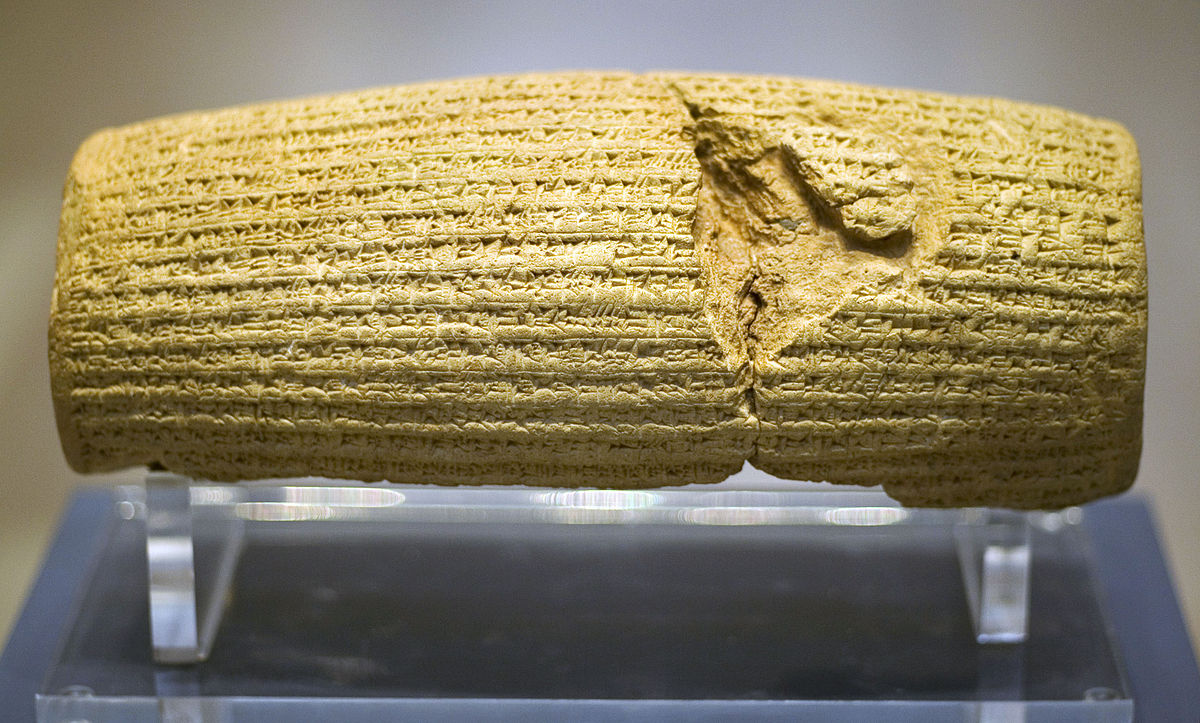
This ancient clay cylinder, was found in 1879 by British archaeologists in the excavation of the ruins of Babylon, and now this baked clay, the most expensive and valuable document of ancient history, is kept at the British Museum.
Translation of the Cyrus cylinder: (Line 20 to 25) I am Cyrus, king of the world, great king, mighty king, king of Babylon, king of Sumer and Akkad, king of the four quarters, the son of Cambyses, great king, king of Anšan, grandson of Cyrus, great king, king of Anšan, descendant of Teispes, great king, king of Anšan, of an eternal line of kingship, whose rule Bêl and Nabu love, whose kingship they desire fot their hearts' pleasure. When I entered Babylon in a peaceful manner, I took up my lordly abode in the royal palace amidst rejoicing and happiness. Marduk, the great lord, /established as his fate (šimtu)\ for me a magnanimous heart of one who loves Babylon, and I daily attended to his worship. My vast army marched into Babylon in peace; I did not permit anyone to frighten the people of [Sumer] /and\ Akkad. I sought the safety of the city of Babylon and all its sanctuaries. As for the population of Babylon […, w]ho as if without div[ine intention] had endured a yoke not decreed for them.
The world, including historians as well as lawyers, know Cyrus the Great’s inscription as the first human rights declaration in the world and the most valuable document of the ancient era. This cylinder is one of the greatest declarations of the human ideal. The American constitution also originates directly from this cylinder. Thomas Jefferson has studied Cyrus and asked his grandson to take part in this study as well, which is definitely far better than Magna Carta's content about real freedom. (Read More about Thomas Jefferson's idea here)
Recently I’ve also found a summary of a very well written book called "How the founding fathers of America, in their own words were inspired by Cyrus the Great?" by Richard N. Frye and Afshin Zand.
At the time of the conquest of Babylon, all the countries under the control of Babylon were also added to the territory of Iran. After one year, Cyrus after having spent a year in Babylonia, selected his elder son (Cambyses II) as the ruler of Babylon and returned to Iran.
Massageteans were so wild and lived in a significant part of the eastern Caspian Sea. They sometimes attacked the borders of Iran and plundered the property of the people. The old king of Iran, who always fought in the front line of the army alongside his troops with the enemy, for the defense of the country, was forced to make the battle again. In one of those wars, a shot from the enemy hit the heart of the great king of the world and killed him. After the war, the Cyrus troops brought him to the Pasargadae with a full ceremony to bury him in a garden near his magnificent palace to go to the eternal bed in a rocky tomb.
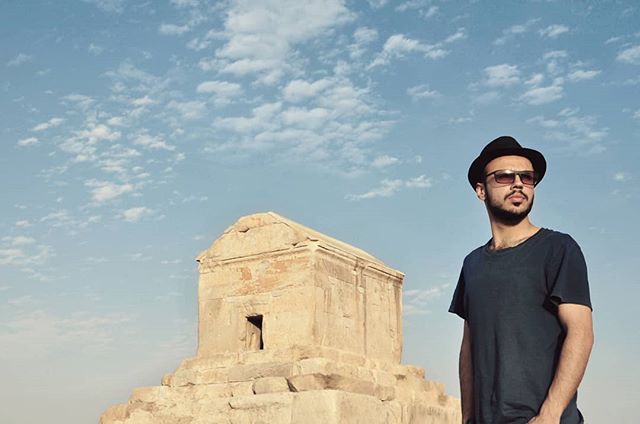
All historians and scholars consider Cyrus the Great to be the most prominent figure in the history of the world. The lawyers know him as the founder of human rights. The greatness and reputation of Cyrus is not because of his management of the world's largest empire, but because of his chivalry, liberation and peacefulness.
Earlier, the kings of Assyria wrote proudly in their inscriptions that when they conquered Elam, they converted Shush into ruins and the land of snakes and scorpions, enslavement of people and looting their property, or the kings of Babylon, were proud of the number of blinded eyes or the number of children who were burned alive; Cyrus is proud of his peaceful arrival to the city, bringing joy to the people, rebuilding the devastations, releasing slaves and captives and returning their property to them.
Indeed, Cyrus is the first king to observe human rights and justice. He was so chivalrous that he did not even oppress the defeated people, allowing them to stay on their religion and even build their temple. Indeed, the founder and the one who gave the meaning to Secularism (the separation of religion from politics) is, from my point of view, Cyrus the Great.
He never thought of his delight, and tried his best not only to release the people of Iran, but also the people of the world. It is true that he, in his inscriptions and writings, repeatedly portrays himself as the king of Iran and the world, but this kingdom is not like the kings before and after him, because he himself fought in the wars at the front line with his soldiers. This kind of kingdom, although he was named as a King, is not different from democracy, because Cyrus defended the country not to preserve his government, but to save Iranian people.
Historical books have repeatedly written that Cyrus's behavior in people's opinion, was not human behavior, but as a God's behavior.
Cyrus himself was the worshiper of Ahura Mazda, But different religions have written about the “popularity of Cyrus”. For example, in the religion of the Jews and the Old Testament, Cyrus is referred to as “the Lord – God of Paradise” and “The king of the whole world”. Cyrus the Great in the Quran is a theory that holds that the character of Dhul-Qarnayn, mentioned in the Quran. In Quran, Dhul-Qarnayn was the king of justice and a man who was so kind with the people. Monotheism, philanthropy, love and humanity are among the traits of Dhul-Qarnayn in the Muslim scripture. The name of Cyrus has been mentioned in the Bible 23 times.
Dandamayev: "Cyrus was the most popular king of Persia and the founder of a universal empire. Cyrus seems to respect the tradition and religions of the conquered lands."
For me Cyrus the Great is still the king of the world, because he was the first to create "peace and unity" in the real world in the true sense. 2600 years ago, when the rulers’ tradition of that era was warfare and killing, a man ruled over the Persia (Iran) and the world, who for the first time said that humans have rights. Respect for human rights led him to conquer Babylon with no war.
The tomb of Cyrus the Great, which, at the same time as its simplicity, shows the greatness and authority of the founder of the popular Achaemenid dynasty, was written some words on top of it: "Man, whoever you are and wherever you came from, here I am sleeping, Cyrus, the king of the kings, The one who built the Persian Empire for the people of Persia and now has sufficed to a small land,... "
After Cyrus, his son Cambyses II got the kingdom, he conquered Egypt, killed his brother, eventually Darius the Great got the Achaemenid kingdom, and built Persepolis (which is near Shiraz) and the current Apadana Palace in Shush.
And Iran, never saw a king like Cyrus the Great...
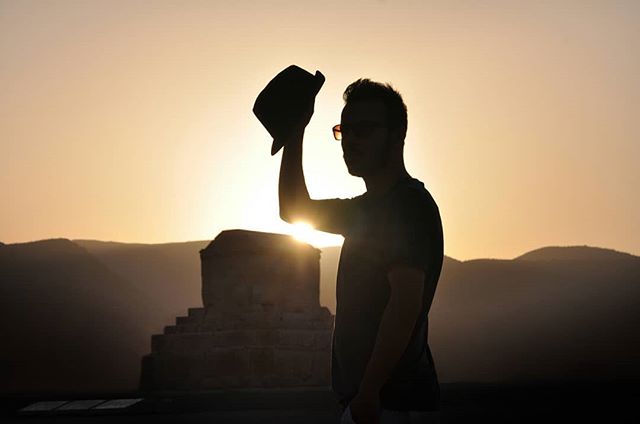

Whenever you can, act as a liberator. Freedom, dignity, wealth — these three together constitute the greatest happiness of humanity. If you bequeath all three to your people, their love for you will never die.
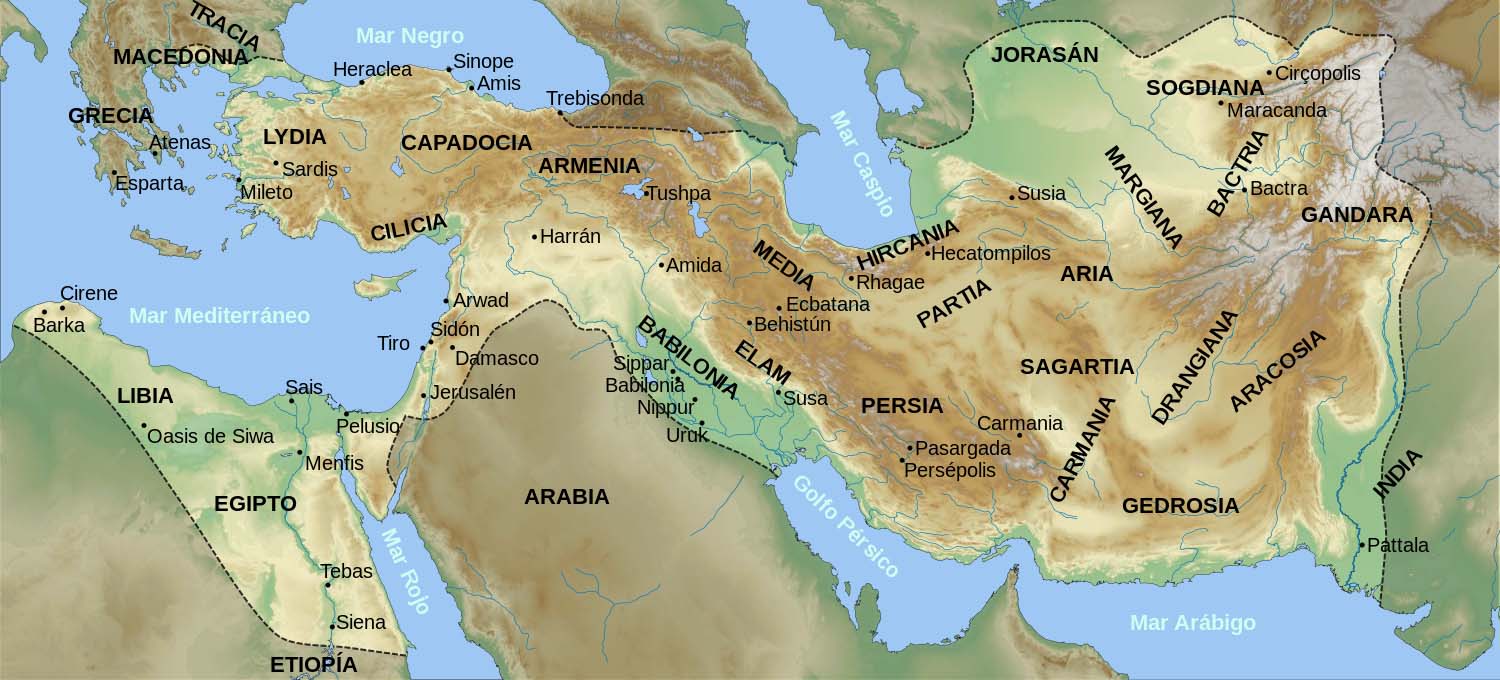
Achaemenid dynasty after Cyrus the Great
From Cambyses II and Berdya to Darius the Great
If you would like me to write about Darius the Great and the Achaemenid dynasty after Cyrus the Great, show your passion and write your comments. Thanks.
Load Comments